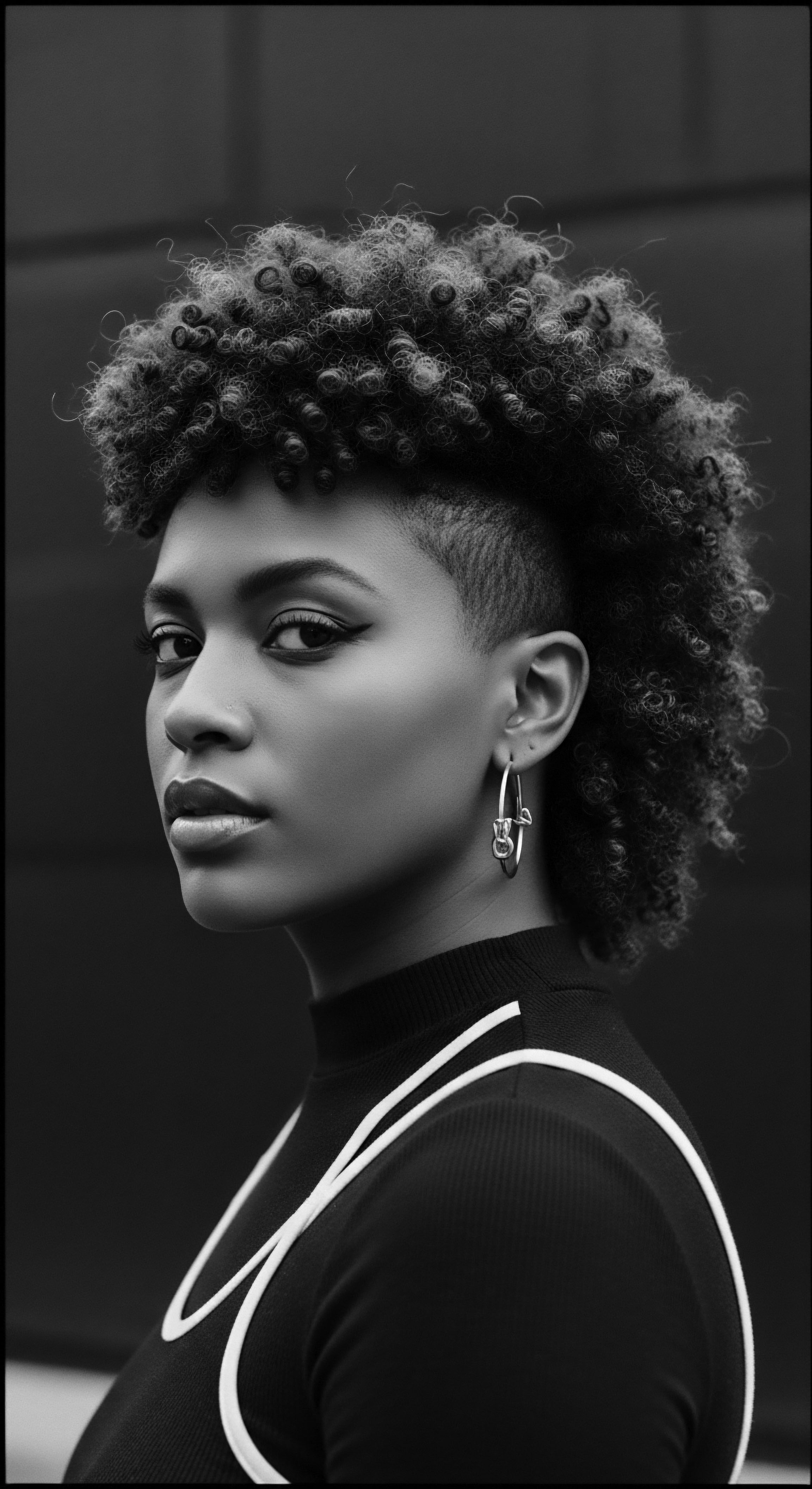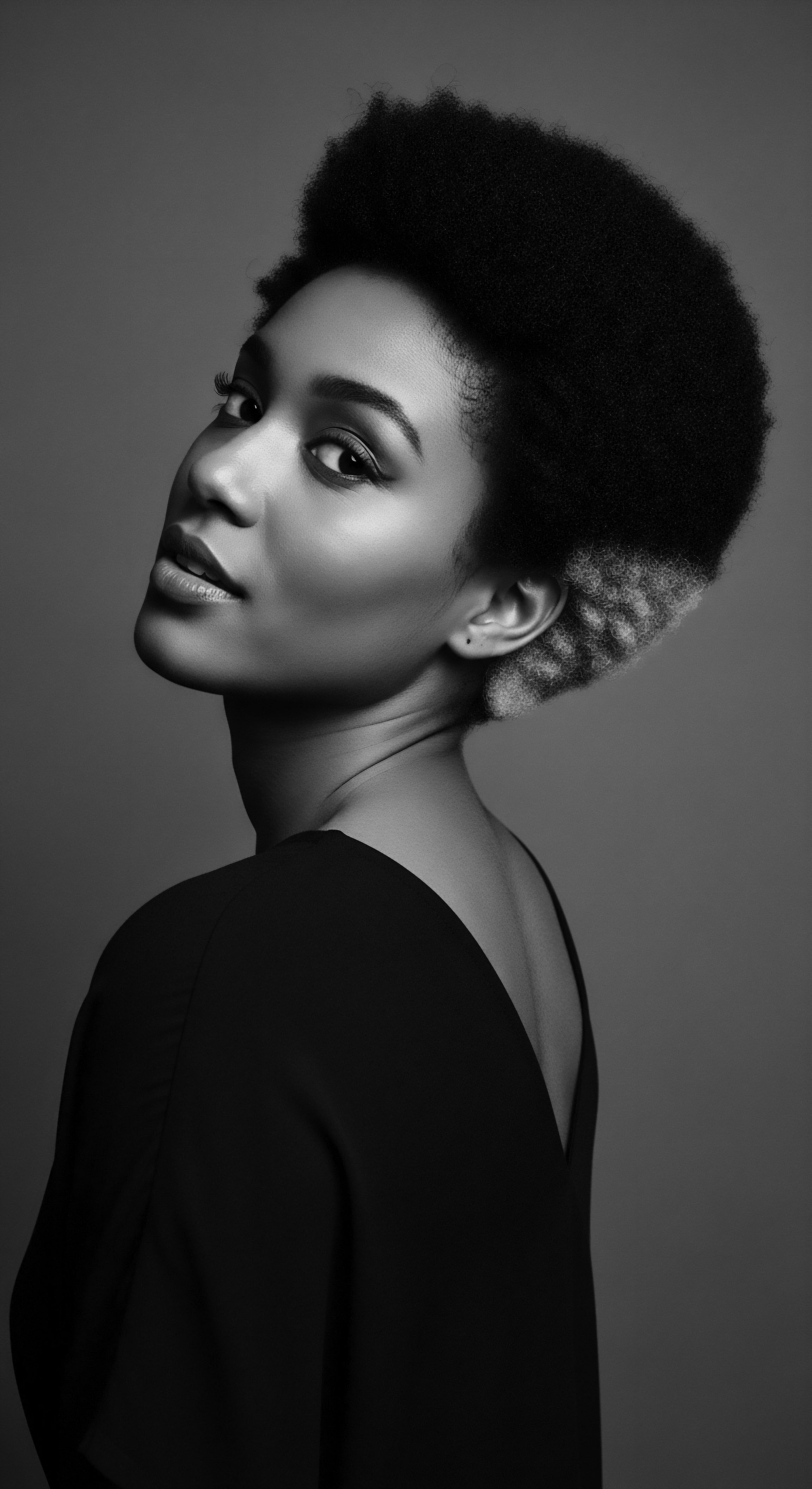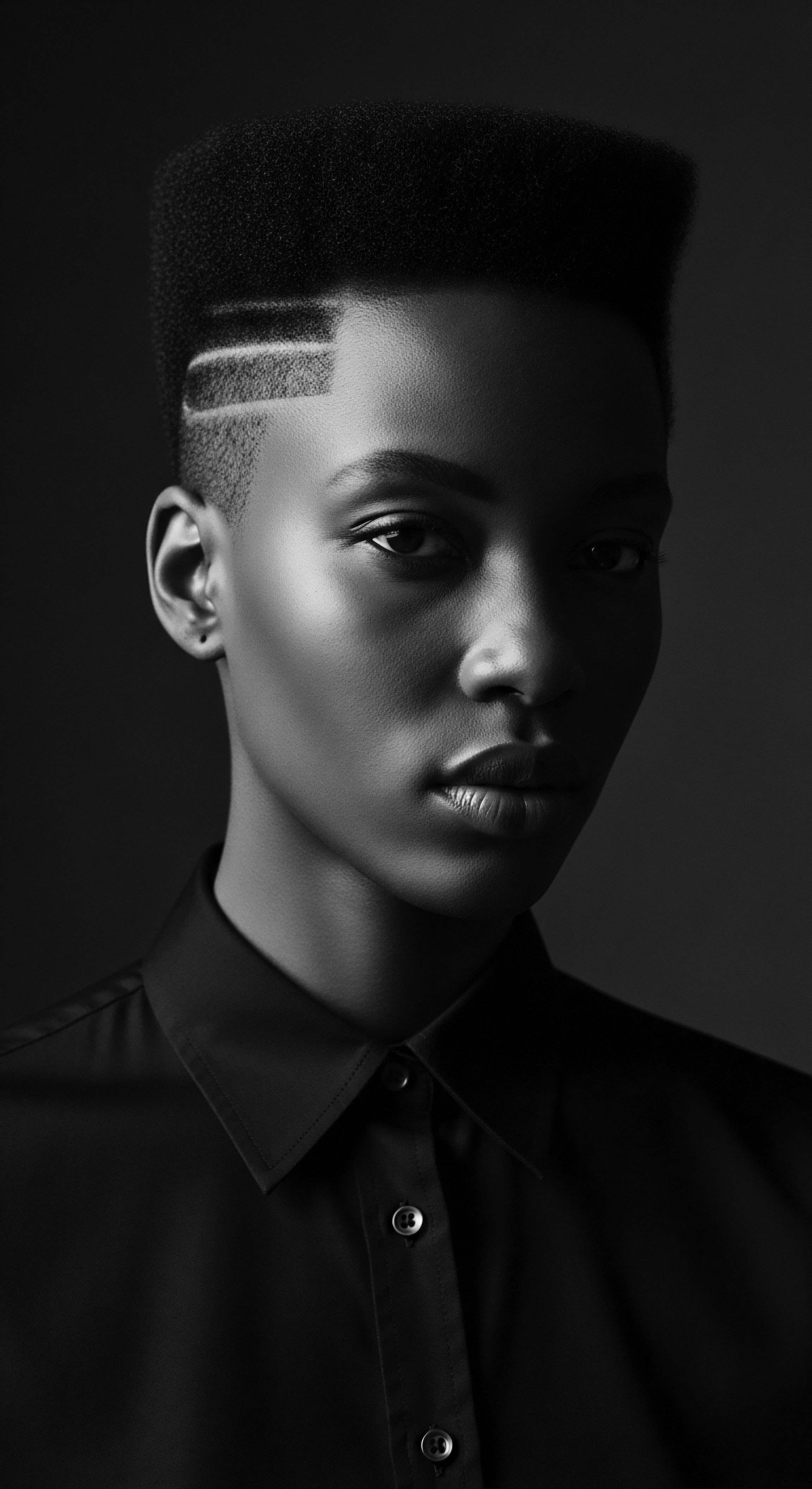
Fundamentals
The spirit of Roothea, a living archive of textured hair heritage, finds its deepest resonance in the careful discernment of what truly nourishes and strengthens the strands that carry generations of stories. When we speak of Scientific Validation within this sacred space, we are not merely referring to sterile laboratory tests or abstract data points. Instead, we consider the process through which observations, whether ancient or contemporary, are systematically examined to confirm their efficacy and safety. This is a deliberate process of understanding, a journey of discovery that seeks to affirm the inherent wisdom embedded within traditional practices, alongside the insights gained from modern inquiry.
For those new to the concept, imagine the careful tending of a garden passed down through families. Each generation observes which plants flourish in certain soils, which herbs soothe, and which remedies heal. This accumulated wisdom, born of repeated observation and shared experience, forms a foundational layer of understanding. Scientific Validation, in its simplest rendering, seeks to document and comprehend the ‘why’ behind these successful traditions.
It asks ❉ what properties within a plant render it beneficial? How do specific care rituals contribute to hair health? It is a gentle, yet rigorous, inquiry into the mechanisms of nature and the ingenuity of human practice.
Scientific Validation, in the Roothea lexicon, signifies the deliberate examination of observations, both ancient and contemporary, to affirm their efficacy and safety for textured hair.
The fundamental purpose is to build confidence in the practices and ingredients we choose for our hair, ensuring they align with principles of wellness and preservation. This pursuit of understanding extends to every aspect of textured hair care, from the very components of a botanical extract to the long-term impacts of styling techniques. It is about bringing clarity to the choices we make, honoring the legacy of those who came before us by understanding the enduring wisdom they bequeathed, and applying contemporary methods to deepen that appreciation.

Understanding Foundational Principles
At its most basic, the confirmation of a practice’s effectiveness relies on repeatable observations. If a particular plant application consistently leads to softer hair or a reduction in scalp irritation across many individuals, a rudimentary form of validation occurs. Our ancestors, keenly attuned to their environment, practiced this form of empirical observation daily.
They learned which leaves created a soothing rinse, which oils offered protection from the sun, and which clays purified the scalp. This intuitive knowing, gathered over countless seasons, established a repertoire of effective care.
- Observation ❉ The consistent noticing of an effect or outcome when a specific action or ingredient is applied. This forms the initial spark of understanding.
- Replication ❉ The ability for the same effect to occur repeatedly under similar conditions, lending credence to the initial observation.
- Benefit ❉ The discernible positive impact on hair or scalp health, such as increased moisture, improved manageability, or alleviation of discomfort.
This elemental cycle of observation and confirmed benefit forms the bedrock upon which more complex systems of validation are built. It speaks to the inherent human desire to understand the world and apply that understanding for wellbeing. For textured hair, this meant generations refining their methods, passing down not just techniques, but the deep-seated knowledge of what truly worked for their unique hair types and environmental conditions.

Intermediate
Moving beyond the foundational, an intermediate grasp of Scientific Validation for textured hair requires a deeper engagement with methodology and context. It is here that we begin to discern how modern scientific inquiry can both affirm and elaborate upon the profound insights held within ancestral practices. The goal is not to supplant ancient wisdom with contemporary findings, but rather to establish a respectful dialogue, where each perspective enriches the other. This involves recognizing the scientific underpinnings of traditional methods, even when those methods predated formal scientific terminology.
Consider the systematic trial-and-error that characterized traditional hair care. Communities would experiment with various botanical preparations, noting their effects on different hair textures and scalp conditions. The most effective remedies would then be integrated into communal practices, becoming part of an oral tradition passed down through generations.
This iterative process, refined over centuries, represents a form of ecological validation, where the environment itself served as the laboratory and the community as the peer review. Understanding this historical context provides a richer appreciation for the resilience and ingenuity of ancestral hair care.
Intermediate understanding of Scientific Validation fosters a respectful dialogue between modern inquiry and ancestral practices, revealing the scientific underpinnings of long-held traditions.

Connecting Ancestral Knowledge with Modern Inquiry
The journey from ancestral observation to modern scientific inquiry often involves isolating active compounds, understanding their molecular interactions, and quantifying their effects. This allows for a precise comprehension of why certain ingredients performed as they did. For instance, the use of certain plant extracts for their conditioning properties by our forebears can now be understood through the lens of their specific polysaccharide content or fatty acid profiles. This connection bridges time, demonstrating the continuity of effective care.
An important aspect of this intermediate understanding is the acknowledgment of biodiversity and its role in hair health. Traditional communities often relied on a wide array of local flora, each contributing unique properties. Modern science can now analyze these individual components, identifying specific phytochemicals that offer benefits such as anti-inflammatory action for the scalp or moisture retention for the hair shaft. This systematic analysis helps us appreciate the complexity and efficacy of the traditional apothecaries.
| Traditional Practice Oiling hair with plant-derived lipids |
| Ancestral Understanding Provides shine, softness, and protection from the elements. |
| Modern Scientific Link Lipids create a hydrophobic barrier, reducing moisture loss and smoothing the cuticle. |
| Traditional Practice Using herbal rinses for scalp health |
| Ancestral Understanding Cleanses, soothes irritation, and promotes growth. |
| Modern Scientific Link Antimicrobial, anti-inflammatory, or antioxidant compounds in herbs support scalp microbiome balance. |
| Traditional Practice Protective styling (braids, twists) |
| Ancestral Understanding Minimizes tangling, breakage, and keeps hair neat. |
| Modern Scientific Link Reduces mechanical stress, preserves length, and shields hair from environmental damage. |
| Traditional Practice The enduring wisdom of ancestral hair care often finds its echo in contemporary scientific explanations, affirming a continuous lineage of effective practices. |

The Role of Sensory Experience and Cultural Context
Beyond quantifiable data, intermediate understanding also acknowledges the profound role of sensory experience and cultural context in validating hair care practices. The feeling of a natural ingredient on the scalp, the aroma of a herbal infusion, or the communal ritual of hair braiding all contribute to a holistic sense of wellbeing that extends beyond mere chemical efficacy. These intangible elements, while harder to measure scientifically, are integral to the lived experience and cultural significance of hair care. They represent a validation that is deeply personal and communal, affirming identity and connection.
Understanding Scientific Validation at this level means appreciating that traditional practices were often validated not only by their visible effects on hair but also by their contribution to social cohesion, spiritual connection, and the transmission of cultural knowledge. The very act of hair care became a moment of shared heritage, a validation of communal bonds that nourished the spirit as much as the strands. This holistic perspective ensures that scientific inquiry remains respectful of the rich, multidimensional legacy of textured hair.

Academic
At the academic zenith, Scientific Validation within Roothea’s ‘living library’ represents a rigorous, systematic process of empirical inquiry, designed to establish the veracity and efficacy of hair care principles, ingredients, and practices. This comprehensive investigation transcends anecdotal evidence, employing methodologies that yield statistically significant, reproducible, and verifiable findings. It is a critical examination, not only of what works, but why it works, how it works, and under what conditions.
For textured hair, this academic pursuit carries an added weight, as it often involves rectifying historical oversights and challenging long-standing biases within mainstream dermatological and cosmetic science. The academic definition of Scientific Validation, therefore, must inherently acknowledge the unique biomechanical properties of textured hair and the ancestral wisdom that has historically guided its care.
The academic lens demands an exploration of the underlying biochemical, biophysical, and physiological mechanisms at play. This involves analyzing the molecular structure of ingredients, understanding their interactions with the hair shaft and scalp microbiome, and evaluating their impact through controlled studies. Reproducibility, statistical power, and peer review form the pillars of this academic validation, ensuring that findings are robust and widely accepted within the scientific community.
Yet, for Roothea, this academic rigor is always tempered by a profound reverence for the cultural contexts from which many effective practices originated. It seeks to bridge the chasm between traditional ecological knowledge and modern laboratory analysis, finding points of profound convergence.
Academic Scientific Validation rigorously investigates hair care principles through empirical inquiry, striving for verifiable findings while acknowledging the unique properties of textured hair and its ancestral wisdom.

Rectifying Historical Disregard ❉ The Case of Okra Mucilage
For generations, the scientific community, largely focused on hair types prevalent in European populations, often overlooked or dismissed the nuanced needs and traditional care practices associated with textured hair. This historical disregard led to a significant knowledge gap and, at times, the propagation of harmful practices. The academic pursuit of Scientific Validation now seeks to correct this imbalance, shining a light on ancestral practices whose efficacy was understood intuitively for centuries.
A compelling instance of this convergence between ancestral wisdom and contemporary scientific affirmation lies in the traditional use of Okra (Abelmoschus Esculentus) for hair care within various West African communities and among the African diaspora. Historically, the viscous mucilage extracted from okra pods was a revered ingredient, employed as a natural detangler, a conditioning agent, and a means to impart slip and manageability to tightly coiled strands. This practice, passed down through oral traditions and embodied knowledge, served as a primary method of care long before the advent of commercial hair products.
Modern scientific investigations have now provided robust validation for this ancestral practice. Research has elucidated the precise chemical composition of okra mucilage, revealing a complex polysaccharide network rich in compounds such as rhamnogalacturonans, arabinogalactans, and pectins. These polysaccharides possess significant hydrating and film-forming properties. For instance, a study published in the International Journal of Biological Macromolecules (Ma et al.
2017) demonstrated that the polysaccharides extracted from okra exhibit excellent moisture retention capabilities and form a protective film, attributes that directly contribute to the conditioning and detangling effects observed ancestrally. The polysaccharides adhere to the hair shaft, reducing friction between individual strands, thereby minimizing breakage during manipulation and combing, a critical concern for fragile textured hair. This direct correlation between the molecular properties identified by contemporary science and the tangible benefits experienced by ancestral practitioners underscores the profound empirical basis of traditional knowledge systems.
The implications of such validation extend beyond mere biochemical confirmation. They serve as a powerful testament to the observational acumen and deep understanding of natural resources possessed by our forebears. The “validation” was inherent in the generations of healthy, thriving textured hair that resulted from these practices.
Modern science, in this context, becomes a language through which we can articulate and amplify the sophisticated knowledge systems that existed outside of formal academic institutions for centuries. This academic scrutiny also encourages a more culturally informed approach to product development, advocating for ingredients and formulations that genuinely cater to the unique needs of textured hair, rather than imposing universal standards that may prove ineffective or even detrimental.

The Delineation of Meaning and Significance
The academic definition of Scientific Validation also involves a meticulous delineation of its meaning and significance within diverse contexts. It asks ❉ what is the true purport of a claim regarding a hair product? What are the implications of its denotation for different hair types and cultural practices? This requires a nuanced understanding of research design, statistical analysis, and the potential for bias.
The meaning of Scientific Validation for textured hair encompasses not only laboratory efficacy but also real-world applicability and cultural resonance. It seeks to understand how products and practices perform not just in controlled environments, but within the lived experiences of individuals with diverse hair textures, often navigating varied climates and styling traditions. The significance of such validation extends to empowering consumers with accurate information, fostering trust in culturally relevant products, and ultimately contributing to a more equitable and inclusive landscape of hair science.
- Empirical Evidence ❉ Data derived from observation or experimentation, forming the bedrock of scientific claims.
- Reproducibility ❉ The ability for a study’s results to be consistently achieved when the experiment is repeated by other researchers.
- Statistical Significance ❉ The probability that an observed effect is not due to chance, indicating a reliable relationship between variables.
- Peer Review ❉ The critical evaluation of research by other experts in the field, ensuring methodological rigor and interpretive accuracy.
Moreover, academic validation also examines the long-term consequences of product use and practice adoption. This involves studying the cumulative effects of ingredients on hair health, scalp integrity, and overall wellbeing. It also critically assesses the social and psychological impact of hair care narratives, particularly those that have historically pathologized textured hair. The pursuit of academic validation in this realm is thus a deeply ethical endeavor, striving for a future where hair science serves to uplift and celebrate the inherent beauty and strength of all hair types, particularly those that have been marginalized.
| Era/Approach Ancestral/Traditional (Pre-20th Century) |
| Key Characteristics of Validation Generational observation, community consensus, efficacy through lived experience. |
| Impact on Textured Hair Heritage Formed the foundation of culturally specific care rituals, often dismissed by later mainstream science. |
| Era/Approach Early Modern Science (20th Century) |
| Key Characteristics of Validation Focus on chemical synthesis, often generalizing from Eurocentric hair types, laboratory efficacy. |
| Impact on Textured Hair Heritage Led to products often unsuitable for textured hair, contributing to its marginalization in research. |
| Era/Approach Contemporary Academic (21st Century) |
| Key Characteristics of Validation Interdisciplinary research, biomechanical analysis, culturally informed studies, clinical trials, re-evaluation of traditional knowledge. |
| Impact on Textured Hair Heritage Promotes inclusive understanding, validates ancestral practices, informs development of tailored solutions for textured hair. |
| Era/Approach The trajectory of Scientific Validation for hair reflects a journey from intuitive ancestral wisdom to a more inclusive and rigorous academic inquiry, increasingly recognizing the profound value of heritage. |

Reflection on the Heritage of Scientific Validation
The journey through the concept of Scientific Validation, as envisioned within Roothea’s ‘living library,’ reveals more than a mere definition; it unveils a profound dialogue between the whispers of ancestral wisdom and the clear voice of contemporary understanding. Our exploration has shown that the validation of hair care practices is not a new phenomenon, but rather a continuous thread stretching back through millennia, woven into the very fabric of communal life and individual identity. From the intuitive observations of our forebears, who discerned the conditioning properties of okra mucilage or the protective qualities of shea, to the precise molecular analyses of today, a singular purpose has guided this enduring quest ❉ to nurture and preserve the unique beauty of textured hair.
This reflection calls us to recognize that the ‘Soul of a Strand’ ethos is not simply a poetic sentiment; it is a call to action. It invites us to honor the resilience embedded in every coil and curl, acknowledging the historical narratives of both challenge and triumph that have shaped our hair traditions. Scientific Validation, when approached with reverence for heritage, becomes a powerful instrument for reclamation and celebration. It allows us to stand firmly on the shoulders of our ancestors, using the tools of the present to illuminate the genius of their past, ensuring that the legacy of textured hair care continues to flourish, vibrant and unbound.
The enduring significance of Scientific Validation for textured hair lies in its capacity to empower. By understanding both the ancestral wisdom and the modern scientific explanations behind effective practices, individuals gain a deeper appreciation for their hair’s capabilities and resilience. This holistic understanding cultivates a sense of pride and autonomy, allowing each person to navigate their hair journey with confidence, rooted in knowledge that spans generations. The heritage of textured hair is not a static relic; it is a living, breathing testament to adaptation, innovation, and enduring beauty, continuously affirmed by both the echoes from the source and the insights of the present.

References
- Ma, Y. Hu, Y. Yan, H. & Fan, X. (2017). Isolation, purification, and characterization of polysaccharides from okra (Abelmoschus esculentus) pods. International Journal of Biological Macromolecules, 94, 764-770.
- Opoku-Agyemang, R. (2018). The Anthropology of Hair ❉ Cultural and Socio-Political Aspects of Hair in Africa and the Diaspora. Palgrave Macmillan.
- Thyssen, J. P. & Kezic, S. (2017). Skin Barrier Function. CRC Press.
- Brooks, G. A. (2003). African Textiles ❉ The Collection of the National Museum of African Art. University of Washington Press.
- Hunter, L. (2011). Buying Beauty ❉ The Ethnic Beauty Industry and the Struggle for Global Style. University of Minnesota Press.
- Byrd, A. D. & Tharps, L. D. (2001). Hair Story ❉ Untangling the Roots of Black Hair in America. St. Martin’s Press.
- Jones, S. (2000). Black Culture in the 20th Century ❉ The Harlem Renaissance. Greenwood Press.
- Small, S. M. (2009). Hair Matters ❉ Beauty, Power, and Black Women’s Consciousness. Duke University Press.
- Palmer, S. A. (2015). The History of Black Hair ❉ The African-American Experience. New Africa Books.
- Johnson, A. (2019). Natural Hair ❉ The Ultimate Guide to Styling, Caring, and Loving Your Natural Hair. Independently published.
